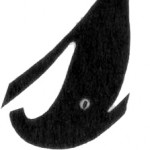Stay Stitching Alternatives?
-
11 years ago LINK
 BeckyinFL
@BeckyinFL
BeckyinFL
@BeckyinFL
My ancient, not-well-adjusted sewing machine is terrible with stay-stitching, such as you do on the neck hole of a garment to keep it from stretching out while adding the collar or facing. Even when I draw a stitching line, the machine just doesn’t like sewing one layer of fabric, and it always ends up somewhat inaccurate and puckery and probably stretched a bit on the bias parts, as I try to make my machine turn the curve. I have fiddled with the pressure foot pressure, sewing with paper underneath, trying different feet, and switching out the zig-zag needle plate for a single hole one, and still it just isn’t good enough. So I began to wonder about using a very thin line of Liquid Stitch or similar glue or adhesive type product. Does anybody have any experience with this or similar frustrations? Thanks in advance, and apologies for asking so many questions. I’m new here and thrilled and rather dazzled by the expertise I see.
11 years ago LINK Sarvi
@Sarvi
Sarvi
@Sarvi
It’s great to have an active new member! I’m so sorry I haven’t got any experience with this issue — I have got some rippling on very light weight fabric but have seemed to be able to steam/press it out and loosen the stitch tension a tick. Hopefully one of the clever folks here will be along shortly to chime in.
11 years ago LINK BeckyinFL
@BeckyinFL
BeckyinFL
@BeckyinFL
You mean one of the OTHER clever folks!
Well, I think I just found a solution. I tried putting a chunk of tear-away stabilizer under the neck edge. It hid the seam allowance guide on the machine bed, but I had good enough control with the thicker material that I could sew an accurate estimate of the 1/2″ allowance.
But I did also consider that if there existed a pen that would draw a fine line of clear, permanent fabric glue, I’d certainly buy one.
Thank you for the welcome!
11 years ago LINK Nicole
@motherof5
Nicole
@motherof5
It doesn’t matter too much if your stay stitching puckers a little. If you increase the stitch length you can ease it after sewing, anyway.
I am so glad you are using stay stitching. It will really add to the professional finish of your garment.
I would be nervous of glue, in case it went hard or got on my iron.
I agree with Sarvi, it is lovely to have some fresh faces.
11 years ago LINKI’d be nervous about glue, too. Nicole’s idea to ease it a bit is a good one. You could maybe try a little fusible interfacing to help stabilize it on the wrong side of the fabric? Also, if you’re able to change the amount of pressure of your presser foot that may help to reduce drag, or if you have a walking foot that would be useful too. If it’s really stretching the neckline I’d be inclined to skip the staystitching and treat the fabric very carefully instead, so it doesn’t get stretched out unnecessarily. I hope that helps!
11 years ago LINK BeckyinFL
@BeckyinFL
BeckyinFL
@BeckyinFL
Thanks for your comments, Nicole and Liesl. I seem to have lots of options now. So glue doesn’t sound like a good idea? I have come to agree with that, for even while preventing stretching, there needs to be some ease.
One thing I sort of forgot about but was reminded when I re-read the instructions is to start the stay-stitching at the shoulder seams and end at the center front or back, which is to sew with the grain of the fabric to minimize distortion. I had been trying to sew the back neck stay-stitching in one pass from shoulder seam to shoulder seam.
I know this must sound really nit-picky!
11 years ago LINK Lightning McStitch
@LightningMcStitch
Lightning McStitch
@LightningMcStitch
Becky I made a weekend getaway dress in some crazy fine sheer fabric and no way could I staystitch (or stitch anywhere too close to an edge for that matter). I used 1/4″ strips of very lightweight fusible interfacing within the seam allowance and that worked perfectly.
Good luck with your sewing.
11 years ago LINK Nicole
@motherof5
Nicole
@motherof5
You must be logged in to reply to this topic.
copyright
Unless otherwise credited, all work on this blog is © Liesl + Co., Inc, 2008-2026. You are welcome to link to this blog, but please ask permission before using any text or images.